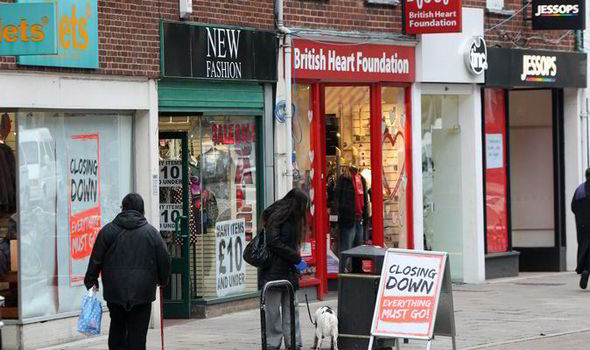Retail’s shrinking share of the UK workforce – which dates back to 2003 and is equivalent to 320,000 missing employee jobs – is starting to hurt job prospects for shop workers despite record employment, according to a new report published today (Wednesday) by the Resolution Foundation.
The report – Sorry, we’re closed – argues that while retailers’ woes have hit the headlines in recent years, the focus should be as much on shop workers as the shops themselves. It shows that the retail sector’s falling employment share is a long-term trend that pre-dates the recent impact of online shopping.
Retail’s share of employee jobs has fallen by 12 per cent since 2003 (from 10.8 per cent to 9.5 per cent). Britain, far from being a ‘nation of shopkeepers’, now has a lower share of workers in wholesale and retail than Germany.
The report finds that, overall, this steady employment share decline has been absorbed by a buoyant labour market. The absolute reduction in retail employee jobs has been small at 28,000 since 2003, compared to a 750,000 fall in manufacturing employee jobs, and has been in the context of a three million overall increase in employment.
However, digging into the experiences of individual shop workers shows that this long-term decline has taken a more worrying turn recently. The Foundation’s analysis shows that retail workers now have a higher rate of redundancies than any other sector. Those leaving retail are now also more likely to become unemployed than leavers from any other sector (31 per cent, compared to an average across all sectors of 26 per cent), having been in line with economy wide averages at the start of the century.
The report also finds that ex-retail workers are also staying unemployed for longer than ex-workers from other sectors. Two in five (41 per cent) ex-retail workers have been unemployed for six months or more, the second-highest of all sectors. This is a stark turnaround from before the crisis, when ex-retail workers had among the lowest unemployment durations.
The Foundation notes that this increased unemployment risk has been most significant for younger workers, with three in five unemployed ex-retail workers aged under 30, despite barely a third of retail’s workforce being in this age bracket.
These growing unemployment risks are all the more challenging for household finances due to the growth of ‘breadwinner shop workers’. The report finds that 34 per cent of retail workers report working the same or more hours than their partner, up from 30 per cent in 2002.
The report highlights how retail’s shrinking role as an employer has coincided with a boost in productivity and pay for those working in the sector. Productivity has increased by 40 per cent in retail since 2000, and typical real hourly pay in the sector has increased by over 5 per cent in real terms since 2009 – compared to an average fall of 4 per cent.
However, retail continues to be a large low-paying sector, the typical hourly wage in retail is almost a third lower than typical wages across the workforce as a whole (£8.80 compared to £12.73).
Daniel Tomlinson, Research and Policy Analyst at the Resolution Foundation, said:
“Retailers’ woes have hit the headlines in recent years, but this is an economic and cultural change 15 years in the making. And while big name brands will inevitably grab the spotlight, we need to focus far more on the people and places most affected by the changing face of retail.
“The good news is that job creation in other sectors – from social care to hospitality – is generating new opportunities. We are unlikely to see the large unemployment hotspots that were left behind by previous rounds of economic change.
“However, in recent years life has become tougher for those leaving retail, who are more likely to find themselves unemployed – and for longer too.
“So while policy makers can’t reverse major and long-lasting changes in how we shop, they can and should focus on the people and places most affected. Rather than trying to rescue the 20th century model of shop-dominated high streets, town centres have an opportunity to diversify and become 21st century destinations for leisure, as well as retail.”







